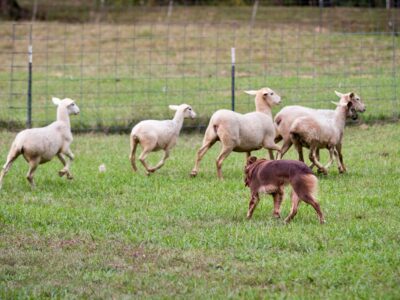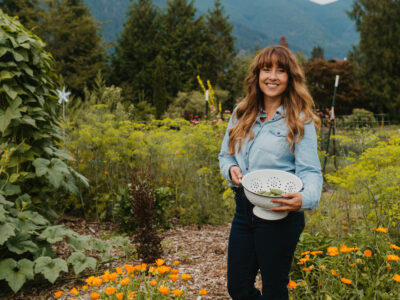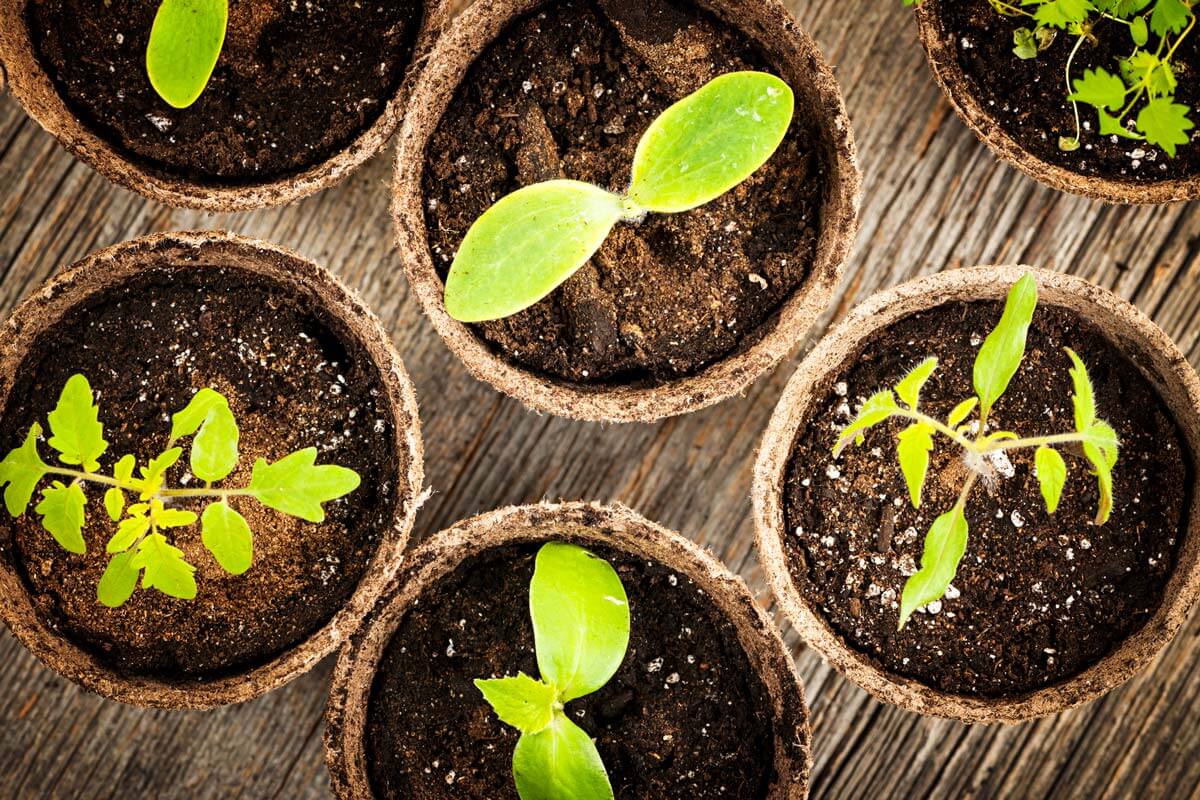Do you have gardening questions? This post is for you! We’re talking about using greenhouses and high-tunnels, overwintering herbs and strawberries, getting started gardening with the easiest crops to grow and more (plus catch my latest garden tour for even more tips!).
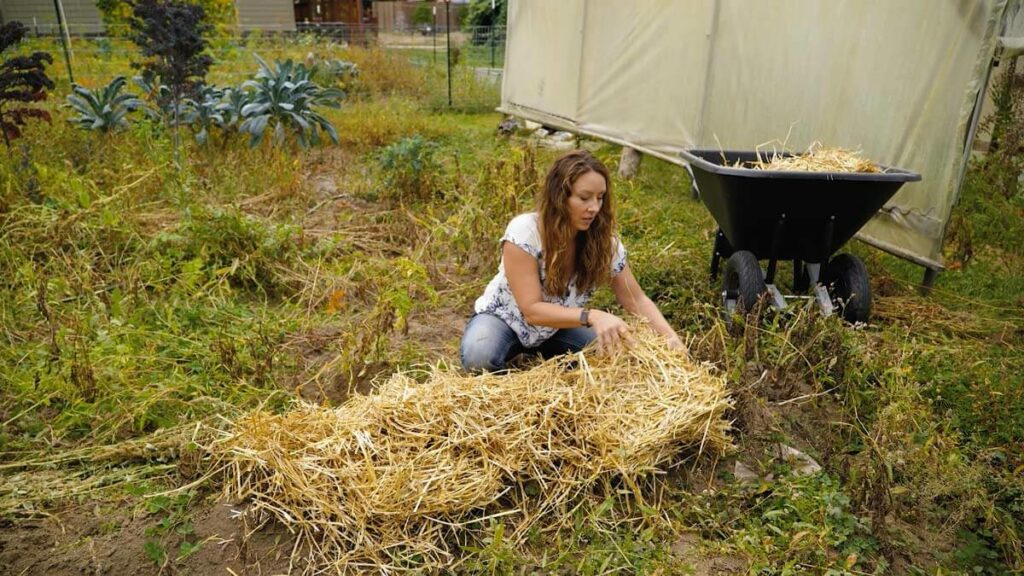
Buckle up! In this podcast episode, I’m answering all your gardening questions. This is episode #369 of the Pioneering Today Podcast, and if you’re anything like me, you love a good ol’ Q&A session.
A few weeks ago, I took to social media and told you all to ask me anything. You all had some really great questions, so I’ve categorized them and will be answering them over the next few podcast episodes to cover everything.
For this post, we’re mainly talking about gardening questions… ready? Let’s dive in!
But first! Watch my latest garden tour below!
What’s the Easiest Crop for Beginners?
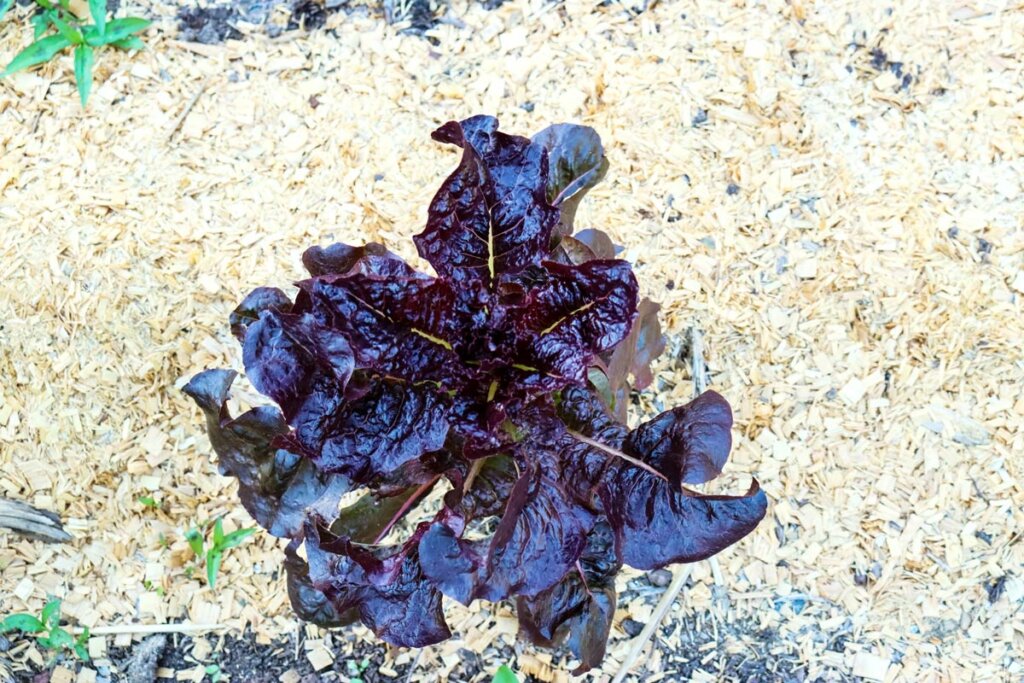
This really depends on what your growing climate is. But overall, something like lettuce is easy to grow. You can grow them in almost any environment, they don’t require support, and they grow rather quickly for a good fast turnaround.
My Squash Froze, Can I Still Harvest It?
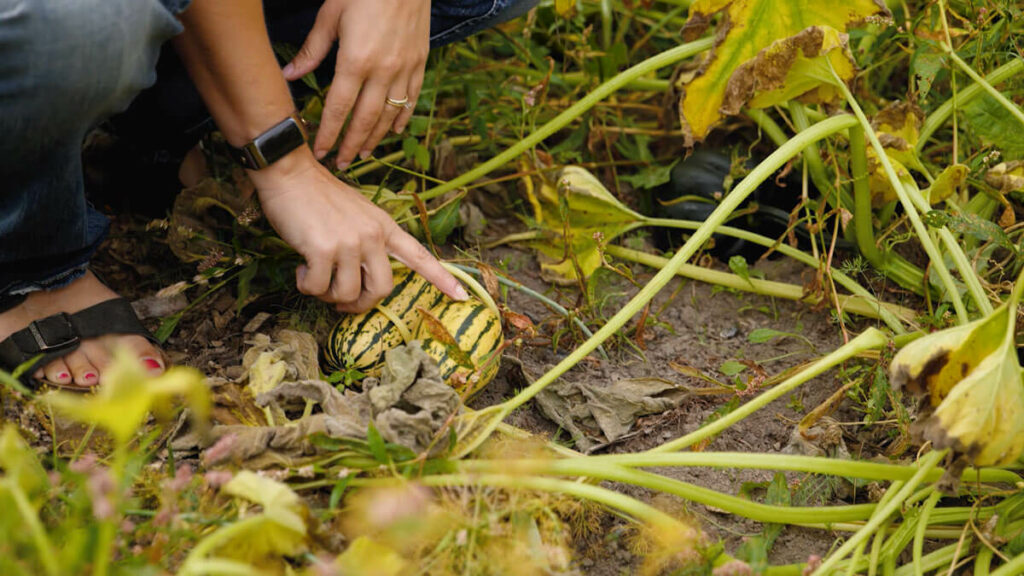
This is a great question. If you don’t already know, you want to leave your squash in the garden until it’s fully ripe, and sometimes in the fall, there are still squash on the vine that aren’t quite ready to come in when that first freeze hits.
If your squash has been frozen, bring it inside and let it thaw out to inspect the damage.
Is the rind hard or soft? If there are soft-spots, you’ll need to cut it up to see how deep those soft spots go and discard any mushy spots.
For canning, remove any soft spots, cube it up and it’ll be fine for canning.
If there are some soft spots, that’s when I would cook it and eat it fresh (this garlic squash recipe is one of my favorites) or puree it to eat fresh or dehydrate, freeze or freeze dry. (Learn all the ways to preserve pumpkins and squash here.)
If it’s frozen and thawed a few times and is pretty unappetizing, it should be tossed to the chickens or in the compost pile.
How to Source Locally Made Products
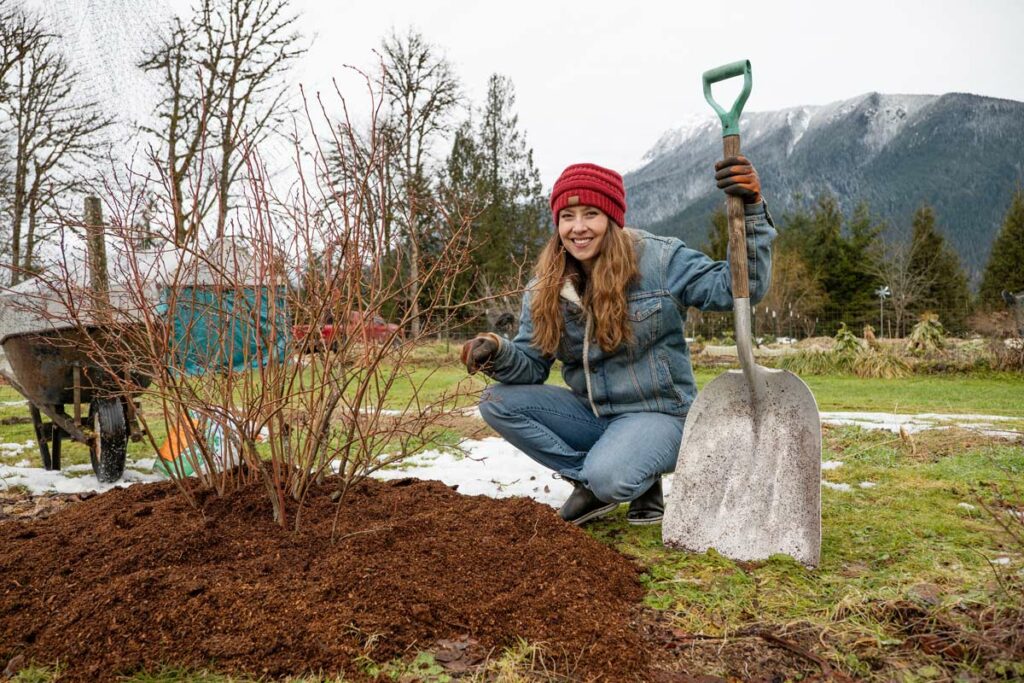
If you’re wanting to find items that are made sustainably in the USA or Canada, that pay their workers a fair wage, and is a quality product.
Over the years, when I could only afford inexpensive items, I’ve had to repurchase many times items I wasn’t willing to invest in for a higher quality version.
Now, as budget allows, I look for higher quality products that will last. I’ve noticed if I can invest in a good product, I actually end up spending less over time because I’m not rebuying the products when the previous one wears out.
This goes for gardening tools, preserving supplies, and even household items like appliances or kitchen tools.
Using Greenhouses & High-Tunnels
Greenhouse vs. High-Tunnel

Living in the Pacific Northwest, if you’re considering a greenhouse to grow crops during the winter months, they’re most likely heated. (If there’s no heat source, I consider that a high-tunnel).
I’ve had a high-tunnel for over a decade. It works very well in the winter months to over-winter cool-weather crops. It works great in the spring and summer for warm-weather crops.
I can actually plant my high-tunnel about two weeks earlier than the rest of the garden. And I also grow my tomato and pepper plants in the high tunnel to prevent blight from overhead rain and watering.
Heated Greenhouse
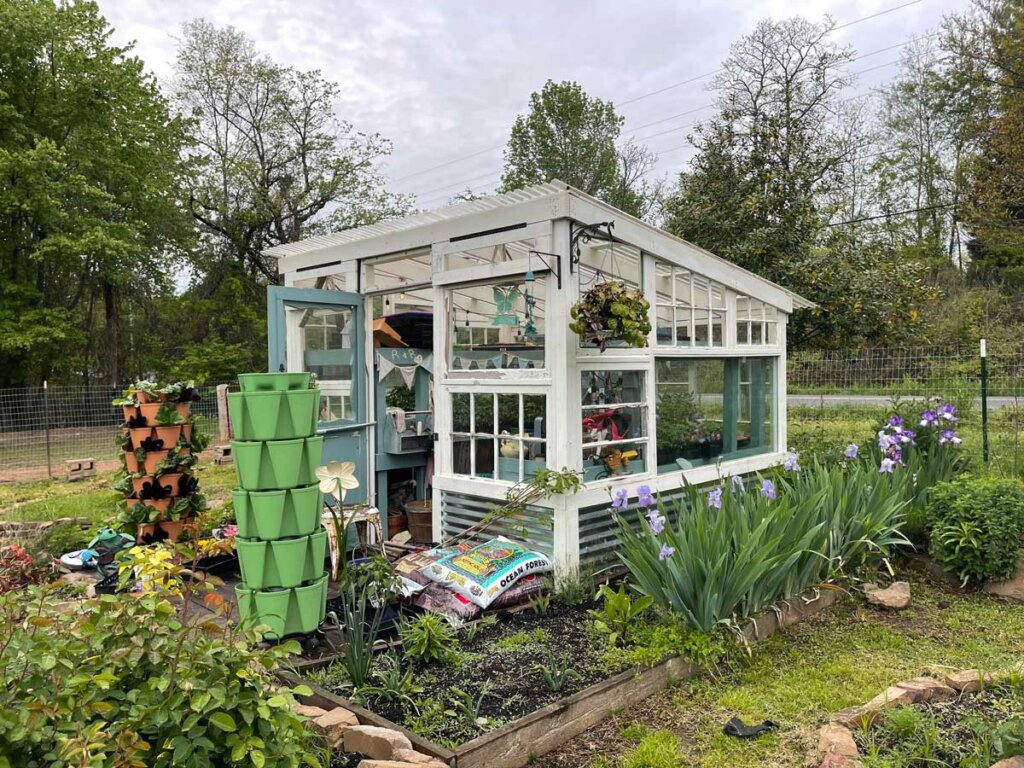
It’s important to remember that plants need both light and heat in order to grow. So even if you have a heated greenhouse but not enough light, your crops may not grow very much, even in a warmer climate.
This is usually the case during the winter months when the sun sets earlier and rises later. Without some kind of artificial light setup, even in a heated greenhouse your crops may not grow.
If you want a greenhouse to grow crops year-round, consider artificial light.
Starting Seeds
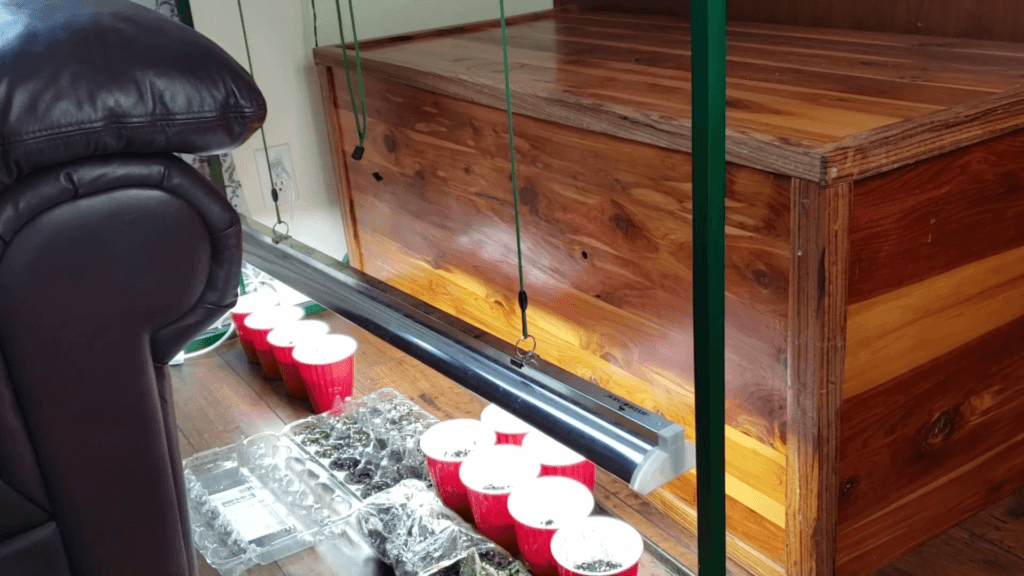
Now, depending on your first and last frost dates, you’ll likely want to start some seeds and using a heated greenhouse is a fantastic solution for this in those colder climates.
Because plants like tomatoes and peppers need to be started around February or March, a heated greenhouse is the only way you’ll be able to successfully start seeds outdoors (you can learn how to start seeds indoors here).
Now, for over 20 years I have successfully started enough seeds for my large garden area in a corner of my house with a small growlight setup. You don’t need something elaborate in order to grow a garden!
However, with the addition of our new homestead farm stay, we’re growing a garden there as well and will likely be selling the extra produce to locals. So I’m currently looking for a heated greenhouse as an addition to our homestead this year.
Size
The size of your greenhouse boils down to needs and budget. However, I have never purchased a large item and wished I had bought something smaller, it’s always the other way around.
Personally, I wouldn’t go any smaller than a 6’x8′ greenhouse. My recommendation is to purchase the largest item available to you for your budget and your plans.
Growing Crops Over Winter
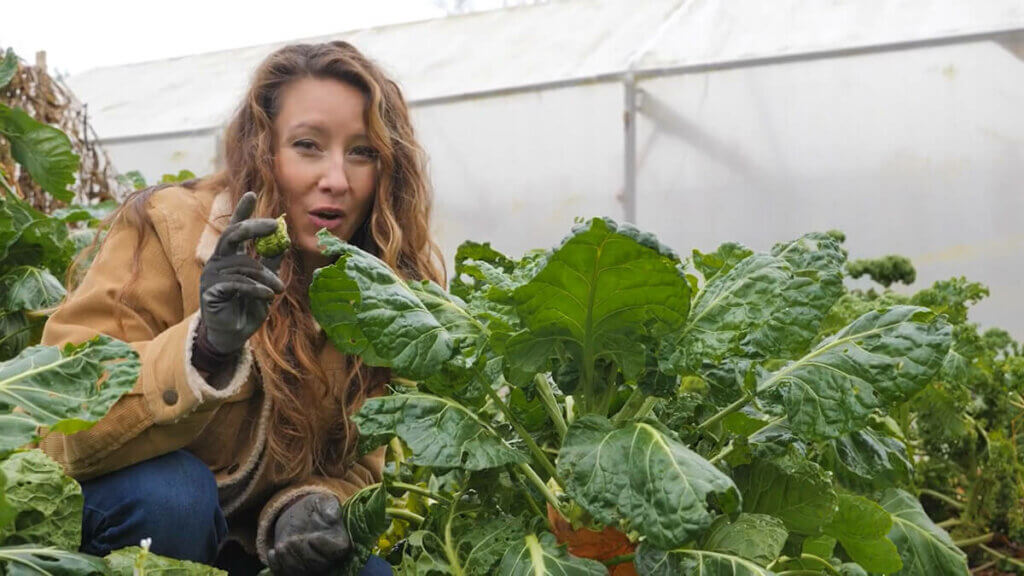
There is a little bit of a misnomer about growing crops throughout the winter months in the colder climates. You’re not actually growing crops, rather, your crops that are already grown are frost-hardy and are just being kept in the garden until harvested.
For me, in the Pacific Northwest, I can keep chard, kale, Brussel sprouts, etc., and keep them in the garden well through January until I’ve harvested them all. Learn more about growing Brussel sprouts here.
I also use the garden as a storage method for things like carrots and potatoes. Learn how to store potatoes in the ground here.
Keeping Herbs and Strawberries Alive Over Winter
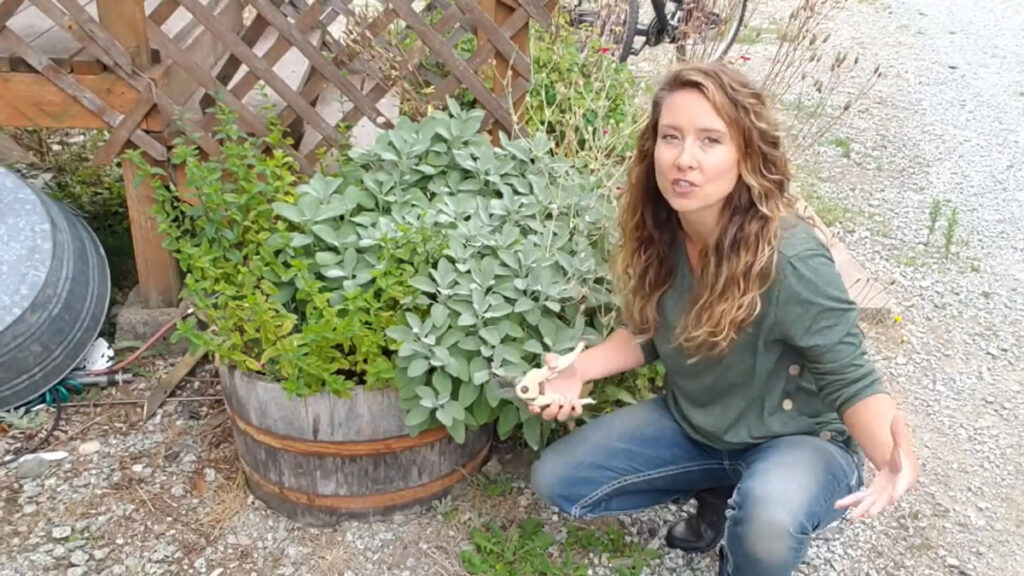
Herbs
There are a ton of different varieties of herbs that overwinter very well. However, there are some herbs that are annual herbs, they’re not meant to overwinter, rather to be planted each year.
There are also herbs that are much more cold-hardy or frost-tender. So you’ll want to know what your climate is like (what’s your average lowest temperature) to know what herbs are best for your area.
We live in gardening zone 7b, and our lowest temperature is 5°F. At that temperature, I’m able to overwinter rosemary, lavender, echinacea, oregano, thyme, peppermint, sage, and lemon balm.
Rosemary is one that many people have a hard time overwintering, but it’s not usually due to the cold. It’s because the plant doesn’t like to have wet feet. So if you live in an area that gets a lot of rainfall or heavy snow without good drainage, it may just be too wet. I grow my rosemary in a container on my deck to ensure good draining.
You’ll also want to know about different microclimates for your property. This can help you know where to plant your garden and overwinter your herbs for the best success. My book The Family Garden Plan and my course The Backyard Gardener both go into detail on using microclimates on your property.
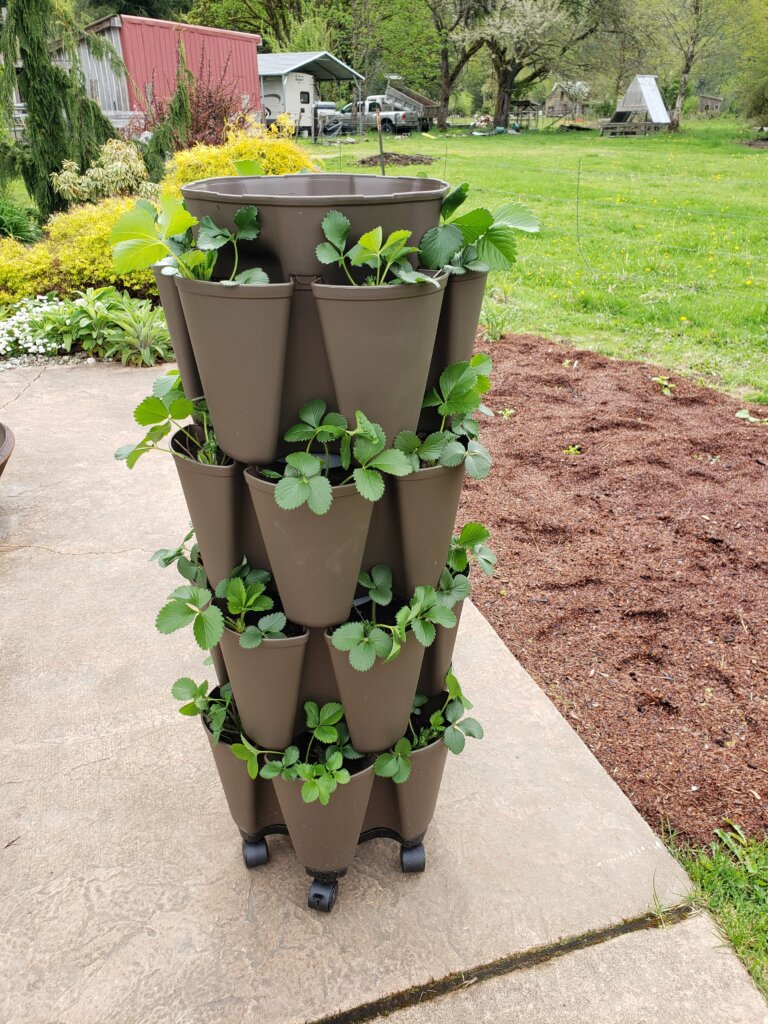
Strawberries
Again, in zone 7b, I can overwinter my strawberries very well. But it’s important also to know that strawberries are only a three-year perennial. After about three years the original crown will not blossom or produce fruit.
You can have strawberry plants indefinitely, though, because each plant will send out runners that will become a new plant.
Strawberry plants aren’t super cold-hardy. After a few days of frosts and freezes around 20°F, your strawberry plant will go into dormancy. This is good and what you want for your plants.
After a few nights at freezing temperatures, this is when you’re going to want to mulch your plants with 2-3 inches of straw to add a layer of protection from the cold and possible snow throughout the winter.
Mulching with leaves can work, but they do get pretty matted down and could cause some damage come spring. Straw will be the easiest to clean out the following year.
If you live where it gets extremely cold, you will want to increase the mulch to about 4-8 inches for added protection. However, if you live where you also get a good layer of snow that stays all winter long, 2-3 inches of mulch covered by a snow layer that doesn’t melt off will provide adequate insulation.
As soon as you hit about 40°F in the spring, pull that mulch back to allow your plants the sunlight they need to start growing again.
I actually grow my strawberries in my GreenStalk vertical planter (use code “PIONEERING” for $10 off your purchase) because I can move it next to my house, where I get Southern exposure over the winter months, and they do great every year.
Check out this post for more info about planting and growing strawberries.
I hope you’re ready for your most successful gardening season yet.
Verse of the Week: Psalm 107:35
Table of Contents[Hide][Show]
More Posts You May Enjoy
- Does Gardening Save Money
- Gardening by Month Series (Garden Tasks by Month)
- Hot Climate Gardening Tips
- Best Vegetables for Small Spaces and Self Sufficiency
- 4 Tips to Success In Growing Your Own Food
- Seed Packet Information – How to Read Seed Packets for Gardening Success
- How to Plan Your Best Garden & Harvest for a Years Worth of Food
- The Ultimate Seed Starting Guide- Planning, Starting & Mistakes to Avoid
[fusebox_transcript]

